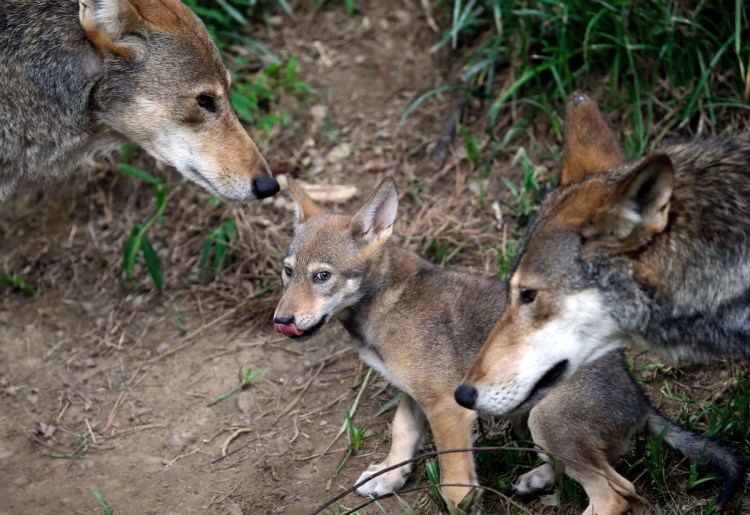DALLAS — Researchers say a pack of wild canines found frolicking near the beaches of the Texas Gulf Coast carries a substantial amount of red wolf genes, a surprising discovery because the animal was declared extinct in the wild nearly 40 years ago.
The finding has led wildlife biologists and others to develop a new understanding that the red wolf DNA is remarkably resilient after decades of human hunting, loss of habitat and other factors had led the animal to near decimation.
“Overall, it’s incredibly rare to rediscover animals in a region where they were thought to be extinct and it’s even more exciting to show that a piece of an endangered genome has been preserved in the wild,” said Elizabeth Heppenheimer, a Princeton University biologist involved in the research of the pack found on Galveston Island in Texas. The work of the Princeton team was published in the scientific journal Genes.
The genetic analysis found that the Galveston canines appear to be a hybrid of red wolf and coyote, but Heppenheimer cautions that without additional testing, it’s difficult to label the animal.
Ron Sutherland, a North Carolina-based conservation scientist with the Wildlands Network, said it’s exciting to have found “this unique and fascinating medium-sized wolf.”
The survival of the red wolf genes “without much help from us for the last 40 years is wonderful news,” Sutherland said.
The discovery coincides with similar DNA findings in wild canines in southwestern Louisiana and bolsters the hopes of conservationists dismayed by the dwindling number of red wolves in North Carolina that comprised the only known pack in the wild.
The red wolf, which tops out at about 80 pounds, was once common across a vast region extending from Texas to the south, into the Southeast and up into the Northeast. It was federally classified as endangered in 1967 and declared extinct in the wild in 1980. The U.S. Fish and Wildlife Service in the 1970s captured a remnant population in Texas and Louisiana that eventually led to a successful captive breeding program. Those canines in 1986 became part of the experimental wild population in North Carolina. That group has been declining since peaking at an estimated 120 to 130 wolves in 2006. A federal report in April said only about 40 remained.
An additional 200 red wolves live in zoos and wildlife facilities as part of captive breeding programs.
A federal judge in November sided with environmental groups that argued in a lawsuit that efforts by federal authorities to shrink the territory of the wild group in North Carolina were a violation of law. The judge ruled U.S. Fish and Wildlife also violated the Endangered Species Act by authorizing private landowners to kill the canine predators even if they weren’t threatening humans, livestock or pets.
Send questions/comments to the editors.



Success. Please wait for the page to reload. If the page does not reload within 5 seconds, please refresh the page.
Enter your email and password to access comments.
Hi, to comment on stories you must . This profile is in addition to your subscription and website login.
Already have a commenting profile? .
Invalid username/password.
Please check your email to confirm and complete your registration.
Only subscribers are eligible to post comments. Please subscribe or login first for digital access. Here’s why.
Use the form below to reset your password. When you've submitted your account email, we will send an email with a reset code.